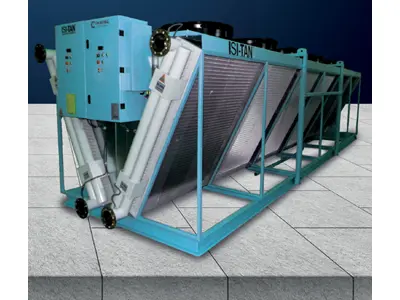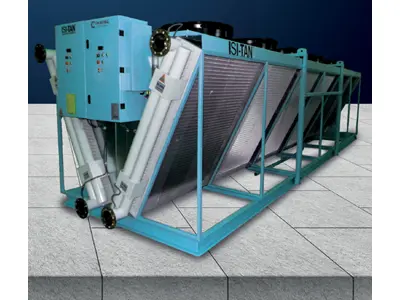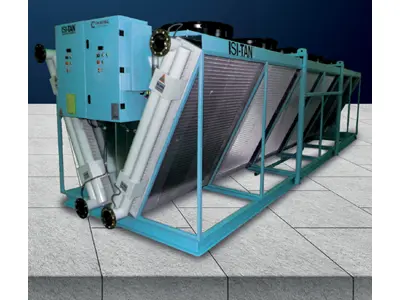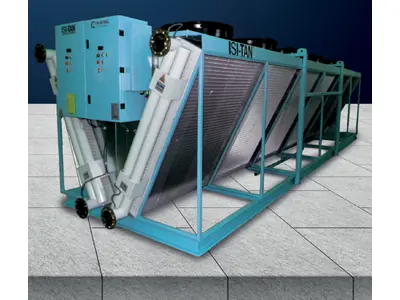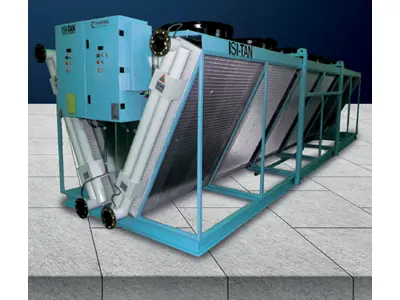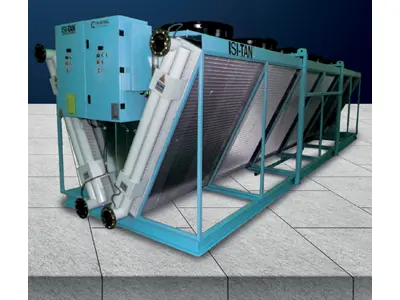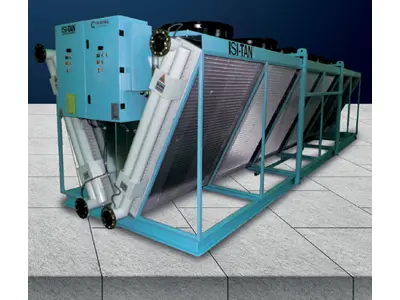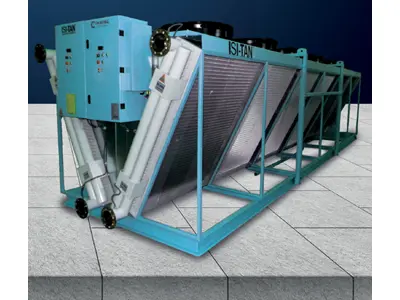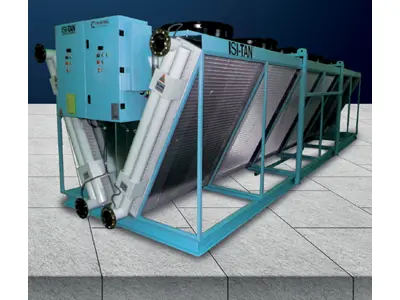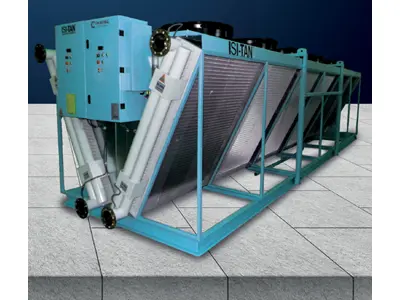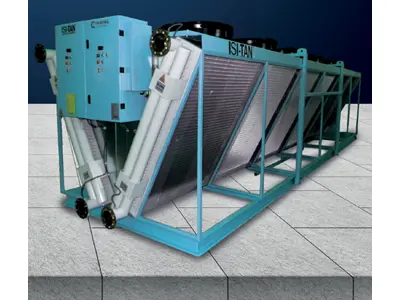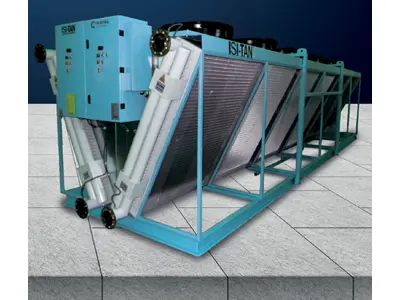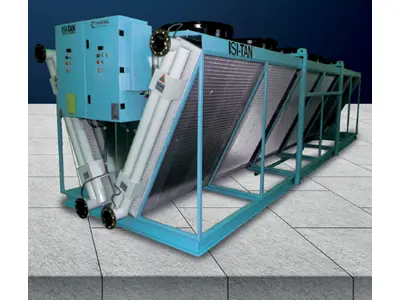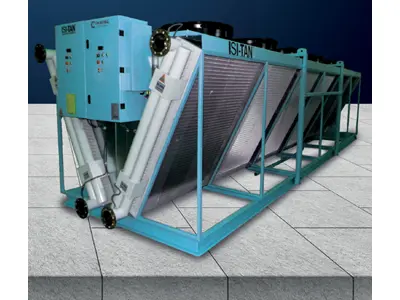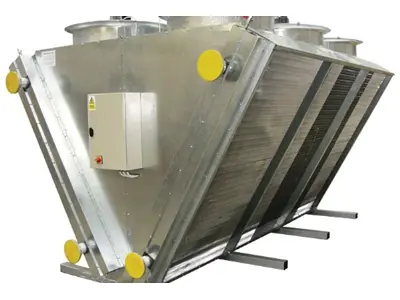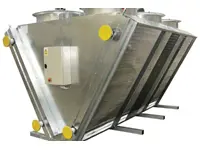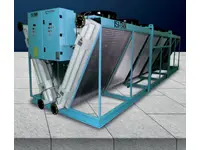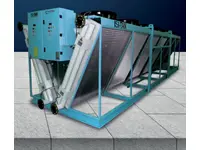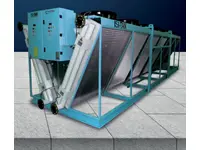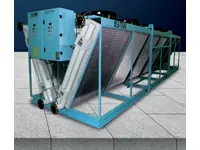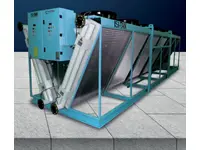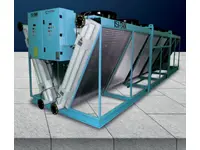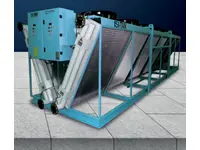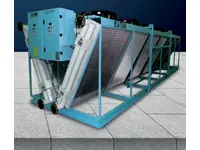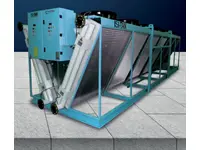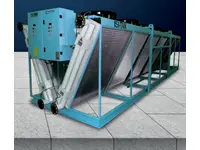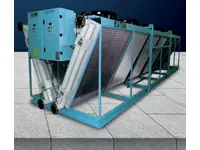Dry Cooler Devices Popular Products
What is a Dry Cooler?
Also known as a dry cooler or dry refrigerator, it is a type of cooling technology that reduces temperature using a solid material instead of traditional liquid-based cooling systems. This technology typically operates using thermoelectric or magnetocaloric effects.
The thermoelectric effect is an event where an electrical potential difference occurs between materials at different temperatures. This potential difference arises from temperature differences. By using special materials, this effect can be used to generate electricity or control heat transfer. It can also be used to lower or raise temperature. This effect can be useful in areas such as space research, energy efficiency, and portable cooling. A Dry Cooler with thermoelectric effects uses special materials called thermoelectric materials. These materials utilize the phenomenon known as the thermoelectric effect to create an electrical potential difference when one side is heated and the other side is cooled. Through this effect, heat transfer is achieved between hot and cold regions.
The magnetocaloric effect refers to a material's change in temperature in response to a magnetic field. Materials in a magnetic field show temperature variations. By using the magnetocaloric effect, it is possible to increase or decrease a material's temperature under magnetic control. This effect has potential applications in cooling technologies and energy efficiency. When we talk about what a dry cooler with magnetocaloric effect is, it controls the temperature of materials using a magnetic field. As the material heats up under a magnetic field, it absorbs heat as it moves away from the magnetic field. Depending on the properties of magnetic materials, this principle enables temperature changes.
Dry Cooler Features, Types, and Applications
Dry coolers are alternative cooling technologies that typically use thermoelectric or magnetocaloric effects to reduce temperature. Cooling is not done through a liquid transfer like other cooling methods. They utilize a magnetic environment or special materials called thermoelectric materials. When we look at the features of dry coolers, we should first consider the absence or very minimal presence of moving parts in the cooling process. Dry coolers contain fewer moving parts compared to traditional liquid-based cooling systems. This results in less mechanical wear and lower maintenance requirements. This provides maximum efficiency at minimum cost.
In terms of portability, dry coolers are generally compact and lightweight, enhancing their portability. This feature facilitates their use in portable coolers and space applications.
Being environmentally friendly is also a standout feature of dry coolers. While some traditional coolers may contain gases harmful to the ozone layer, dry coolers generally offer a more environmentally friendly alternative. They provide environmental advantages by not having to contain liquids. Additionally, low energy consumption is an important feature for sustainability. Models that operate with the thermoelectric effect can generate electricity from temperature differences while providing cooling.
Dry coolers can respond quickly to temperature changes. This can be beneficial in applications requiring rapid cooling or heating. This ensures rapid cooling in a short time, providing significant benefits for applications such as shock cooling. Additionally, dry coolers can provide efficiency savings by performing the same job in a shorter time compared to different types of coolers.
Dry Cooler Types
Dry coolers can be classified into various types based on different operating principles. The types of dry coolers are as follows;
1. Thermoelectric Dry Coolers: They operate using the thermoelectric effect. Thermoelectric materials can convert temperature differences into electrical potential differences. This potential difference can be used for lowering or heating temperatures. Thermoelectric dry coolers have a wide range of applications, from portable coolers to electronic device cooling.
2. Magnetocaloric Dry Coolers: They operate using the magnetic field effect. Materials in a magnetic field can show changes in temperature in response to changes in the magnetic field. This effect can be used for cooling and heating purposes.
As dry cooler technology is constantly evolving, it is likely that different types of dry coolers will emerge in the future.
Dry Cooler Applications
Each type can offer advantages based on specific application areas and requirements. Looking at the applications of dry coolers:
1. Portable Cooling Devices: Portable coolers using thermoelectric cooling technology are used to transport food, medicine, or other sensitive materials. They are ideal for situations such as picnics, camping, and emergencies. For these purposes, a vertical dry cooler designed to withstand all weather conditions, including heavy snow and wind loads, ensures the long life of the cooling system.
2. Electronic Devices: Computers, mobile devices, solar panels, and other electronic devices can be more effectively cooled using thermoelectric coolers. This can increase the efficiency of devices and reduce overheating issues.
3. Medical Devices: Medical devices include many applications requiring precise temperature control. Thermoelectric dry coolers can provide temperature control in medical devices to help ensure the safety of medications, blood samples, and other medical materials.
4. Space Research: Portable and energy-efficient cooling systems are required in space research. Dry coolers can provide temperature control on space stations and spacecraft to save energy.
5. Energy Efficiency and Sustainability Applications: Dry coolers can be used to increase energy efficiency in industrial processes. They can also contribute to sustainability efforts by creating environmentally friendly and low-energy consumption cooling systems. Especially models operating with the thermoelectric effect can generate electricity from temperature differences while providing cooling.
6. Laboratory Applications: Precise experiments, analyses, or storage of materials may require specific temperature conditions. Dry coolers can be used in laboratories for applications requiring temperature control.
7. Renewable Energy Technologies: Solar panels, wind turbines, and other renewable energy production systems can be affected by temperature changes. Dry coolers can be used to increase the efficiency of these systems and provide temperature control.
8. Industrial Cooling Applications: Industrial machines, production lines, and factories can provide temperature control using thermoelectric or magnetocaloric dry coolers. This can improve production process stability and optimize energy consumption.
Dry cooler applications are expanding rapidly and with the advancement of technology, they offer more possibilities for use. The advantages of this technology provide valuable potential in many sectors by overcoming the limitations of traditional cooling methods and providing more efficient, portable, and environmentally friendly cooling solutions.
Dry Cooler Operating Principle
Cooling technology plays a significant role in many industries and daily life. Traditional cooling systems generally work by transferring heat from one medium to another using liquid fluids or gases. However, these systems can sometimes be complex, require maintenance, and may not be environmentally friendly. Dry coolers offer an innovative cooling technology developed as an alternative to these limitations. The operating principle of a dry cooler varies depending on the type as follows:
1. Operating Principle of Thermoelectric Dry Coolers: One of the foundations of dry coolers is the thermoelectric effect. Thermoelectric dry coolers operate using thermoelectric materials that convert temperature differences into electrical energy. This effect is based on an aspect of thermodynamics known as the Seebeck effect.
2. Operating Principle of Magnetocaloric Dry Coolers: The magnetocaloric effect is based on the principle of a material's change in temperature in response to a magnetic field. This effect occurs when materials called magnetocaloric materials show temperature variations when exposed to a magnetic field.
The term 'dry cooler' is often referred to as a 'dry refrigerator' or 'thermoelectric cooler.' The dry cooler machine is designed to lower or control temperature using the thermoelectric effect. Dry coolers contain fewer moving parts compared to traditional liquid-based cooling systems, providing a more portable, energy-efficient, and environmentally friendly cooling solution.
